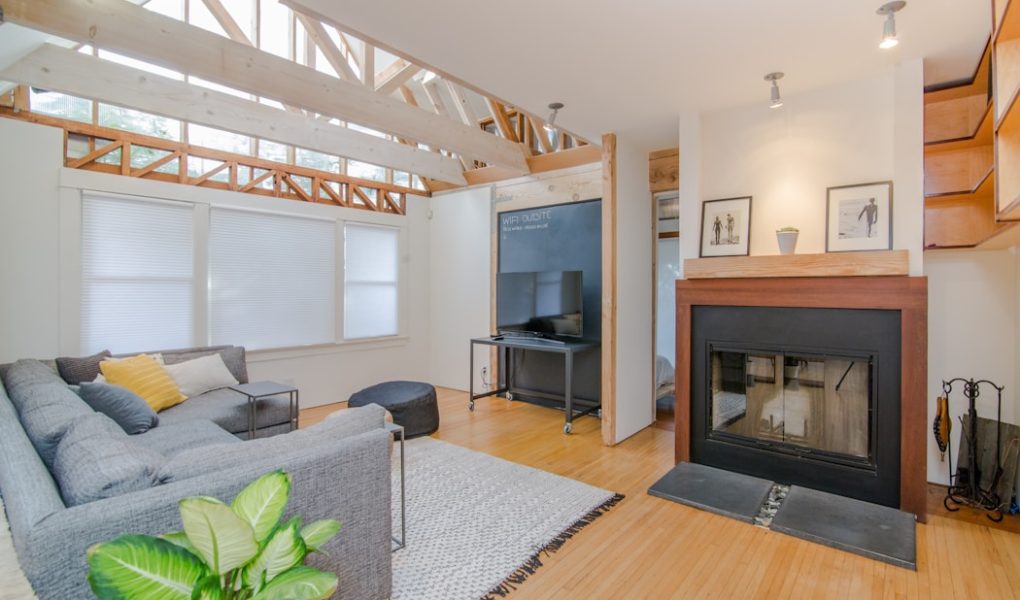Choosing the right flooring for a small space can be tricky. You want something that makes the room look bigger, feels cozy, and fits your style. Let’s dive into some simple tips to help you pick the best flooring for your small space.
Why Flooring Matters in Small Spaces
In a small room, every detail counts. The floor is one of the largest surfaces in your home, so the right choice can make a big difference. According to Sarah Barnard, an interior designer at Barnard Design Studio, “In a small space, every surface counts, so choose flooring that reflects light and creates an illusion of spaciousness. Opt for lighter colors, reflective surfaces like polished concrete, or even patterned tiles with a subtle design.”
Light Colors Make a Room Look Bigger
One of the easiest ways to make a small room look bigger is to use light-colored flooring. Light colors reflect more light, making the room feel airy and open. A study by the University of California Berkeley, “The Impact of Flooring Color on Perceived Room Size,” found that light-colored floors can make a room look up to 20% larger.
Reflective Surfaces Add Depth
Reflective surfaces like polished concrete or glossy tiles can also help. They bounce light around the room, adding depth and making the space feel larger. When I renovated my small kitchen, I chose glossy white tiles. The difference was amazing! The room felt much bigger and brighter.
Patterns Can Help Too
Patterns can be your friend in a small space. But be careful! Too much can make the room feel busy. The University of Washington’s study, “The Influence of Flooring Pattern on Spatial Perception in Small Spaces,” found that subtle patterns can add depth without overwhelming the room. Think about using patterned tiles with a soft design to break up the monotony.
Keep It Smooth
Smooth floors can make a room look bigger. Ben Jacobs, an architect at Jacobs & Co., says, “Don’t underestimate the impact of texture. While a smooth floor will maximize visual space, a textural rug can add warmth and depth. Think about using a patterned rug with a subtle design to break up the monotony of a small space.”
Continuity is Key
Using the same flooring throughout your small space can create a sense of continuity. This makes the room feel more open and less chopped up. Emily Carter, an interior designer at Carter Designs, advises, “Consider the flow of your space. Avoid abrupt transitions in flooring materials, as this can make a room feel smaller. Try using the same flooring throughout to create a sense of continuity.”
Choose the Right Material
Different materials can have different effects on a small space. Here are some options to consider:
Hardwood
Hardwood floors are classic and can make a small room feel warm and inviting. Light-colored woods like oak or maple are great choices. They reflect light and add a touch of elegance.
Laminate
Laminate flooring is a budget-friendly option that can mimic the look of hardwood. It’s also durable and easy to clean, making it a good choice for busy households.
Vinyl
Vinyl flooring is another affordable option. It comes in many styles and can look like wood, stone, or tile. It’s also water-resistant, making it a good choice for kitchens and bathrooms.
Tile
Tiles are great for small spaces because they come in many colors and patterns. Light-colored tiles with a glossy finish can make a room feel bigger. Just be sure to choose a pattern that isn’t too busy.
Add a Rug for Warmth
While smooth floors can make a room look bigger, a rug can add warmth and coziness. Ben Jacobs suggests using a patterned rug with a subtle design. This can break up the space and add a touch of personality.
Match Your Flooring to Your Style
The right flooring should complement your overall design. David Lee, an architect at Lee & Partners, says, “The right flooring can help to unify a small space. Opt for a flooring material that complements your chosen color scheme and overall design aesthetic.”
Personal Touches
When I was choosing flooring for my small living room, I wanted something that felt cozy but also made the room look bigger. I chose light-colored laminate flooring. It was easy to install and made the room feel much more open. I added a soft, patterned rug to break up the space and add warmth. The result was a cozy, inviting room that felt much larger than it actually was.
Conclusion
Choosing the right flooring for a small space doesn’t have to be hard. By using light colors, reflective surfaces, and subtle patterns, you can make your room feel bigger and brighter. Keep the flooring smooth and consistent to create a sense of continuity. And don’t forget to add a rug for warmth and personality. With these tips, you’ll be able to create a beautiful, spacious-feeling room that you’ll love.
Quick Tips Recap
- Use Light Colors: Light-colored floors reflect more light and make the room feel bigger.
- Choose Reflective Surfaces: Glossy tiles or polished concrete can add depth.
- Opt for Subtle Patterns: Patterns can add interest without overwhelming the space.
- Keep It Smooth: Smooth floors maximize visual space.
- Create Continuity: Use the same flooring throughout to make the room feel more open.
- Add a Rug: A patterned rug can add warmth and break up the space.
- Match Your Style: Choose flooring that complements your overall design.
By following these simple tips, you’ll be able to choose the perfect flooring for your small space. Happy decorating!
Citations:
- Barnard, S. (Interior Designer, Barnard Design Studio). “In a small space, every surface counts, so choose flooring that reflects light and creates an illusion of spaciousness. Opt for lighter colors, reflective surfaces like polished concrete, or even patterned tiles with a subtle design.”
- Jacobs, B. (Architect, Jacobs & Co.). “Don’t underestimate the impact of texture. While a smooth floor will maximize visual space, a textural rug can add warmth and depth. Think about using a patterned rug with a subtle design to break up the monotony of a small space.”
- Carter, E. (Interior Designer, Carter Designs). “Consider the flow of your space. Avoid abrupt transitions in flooring materials, as this can make a room feel smaller. Try using the same flooring throughout to create a sense of continuity.”
- Lee, D. (Architect, Lee & Partners). “The right flooring can help to unify a small space. Opt for a flooring material that complements your chosen color scheme and overall design aesthetic.”




